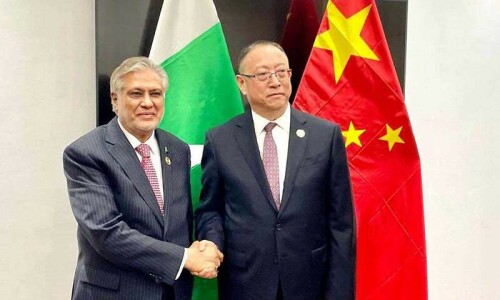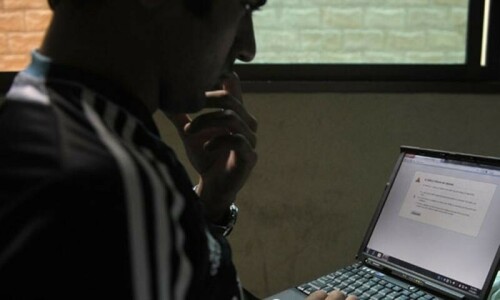
Women and Social Change in Pakistan By Shehzadi Zamurrad Awan Cambridge Scholars Publishing, UK ISBN: 978-1527586963 343pp.
There are many ways of telling ‘her’ story. Some do so with lots of narrative peppered with some statistics; others with more facts and figures, moderated by a healthy dosage of storytelling; yet others only rely on qualitative research and let their sources speak.
The book, titled Women and Social Change in Pakistan, is based on the PhD thesis of academic Shehzadi Zamarrud Awan. She pens her take by incorporating lots of pre-existing research with some fresh primary sources. Her view of the women’s question in Pakistan is panoramic, her brush is broad, but the text is slipshod and suffers from extensive generalisations and some inaccuracies.
The book’s eight main chapters focus on women in Pakistan’s socio-cultural environment, politics, education, media and civil society. The first two chapters, ‘Reflections on Women’s Placement’ and ‘Socio-Cultural Environment and Women’ are quite weak and full of generalisations. The discourse on women and politics is somewhat better drafted, but the overall text ranges the spectrum of quality.
The crux of the thesis is that women suffer in Pakistan because of patriarchal socio-economic structures and strident opposition from the orthodoxy. The conclusion is that agents of change — education, political processes and participation, the media and the civil society — have had limited impact on women’s journey towards empowerment. Patriarchal structures are rooted deep in the societal make-up and these continue to persist and impede the way for women to fully actualise their lives.
A book based on a PhD thesis attempts to provide a panoramic, broad-brush overview of the status of women in Pakistan, but does not offer a cohesive hypothesis and suffers from extensive generalisations
The author has dug up some old Urdu language sources along with sources in the English language, that add value to the book. Also, the way the book dwells on women’s political participation in Pakistan’s formative years is very useful for readers of my generation, who are largely unaware of this history.
Awan’s primary sources include focus group discussions and questionnaires given to female — and, where applicable, male — students at three universities in Lahore: University of the Punjab, Lahore College for Women University and Forman Christian College University. However, she does not describe her sampling methodology, except to emphasise that the student respondents represent “nearly all socio-economic classes.”
At one place, Awan shares a good finding regarding how even university-going women — 56.1 percent of respondents — in Lahore are often unaware of contemporary pro-women legislative developments in recent decades in Pakistan. The discussion at other places, while employing primary resources, does not stand out much and is not well integrated into the book’s flow.
The main issue with Women and Social Change in Pakistan is that it does not offer a coherent hypothesis. The text discusses social change at many places and in many chapters, yet does not elaborate what sort of change, parameters and variables it sets out to examine. Neither does it pronounce its findings accordingly. It may well be representative of ground realities, but there is no examination of those realities through the prism of any rigorous hypothesis and analytical reasoning.
The early history of women in politics, from 1947 to the 1970s, is good as it draws attention to women’s political struggles in Pakistan’s infancy. The author hails the Muslim Family Laws Ordinance of 1961 and praises Gen Pervez Musharraf’s government, in power from 1999 to 2008, for advances made in women’s inclusion in politics, for reviving women’s quota of 17 percent in the federal and provincial assemblies and 33 percent in the local governments and also for some pro-women legislation.
Zulfikar Ali Bhutto’s administration is marked for gender-related safeguards in the 1973 Constitution, but their implementation was weak. Gen Ziaul Haq’s dictatorship from 1977 to 1988 was a dark period for women’s rights as it instituted discriminatory legislation and pursued retrogressive, anti-women policies in education, employment and sports.
Unfortunately, the revival of democracy from 1988-1999 brought no visible and significant relief for women under the leadership of Benazir Bhutto and Nawaz Sharif. Post-2008 and onwards, there has been lots of pro-women legislation, but again, very weak implementation of women’s rights.
The crux of the thesis is that women suffer in Pakistan because of patriarchal socio-economic structures and strident opposition from the orthodoxy. The conclusion is that agents of change — education, political processes and participation, the media and the civil society — have had limited impact on women’s journey towards empowerment.
Education is considered the major force multiplier for change in women’s personal and professional lives. The media — print, electronic and social — has raised awareness regarding women’s problems and has often sensationalised women-centric issues, but has not been able to transform their lives. Similarly, civil society talks good shop, creates awareness and contributes to women-related legislation, yet its overall role in bringing meaningful change is limited.
Of the four variables — education, politics, the media and the civil society — the roles of education and politics, particularly from 2001 onwards, have been relatively more significant than the other two. However, none have managed to bring any major transformations because of persistent patriarchal structures and the negative role of orthodoxy.
Of the errors within the text, some are not too visible, while others very much so. For instance, at one point the author states that Benazir Bhutto returned to Pakistan in 2008 and was subsequently assassinated, whereas the correct year is 2007. Better proofreading would have prevented such an obvious mistake.
At another place, the author appears not to know that the Khawateen Mahaz-e-Amal is simply the Urdu name of the Women’s Action Forum (WAF). Awan sometimes uses the one and sometimes the other, but not interchangeably. She seems to be simply following the English and Urdu language sources without being able to make the necessary connection. One would know of this if one had interviewed women rights activists with some perspective — which the author apparently has not.
The book notes that Awan interviewed women rights activists, but does not give a list of the interviewees towards the end. Furthermore, Appendix C gives information on women’s representation in the national and provincial assemblies from 1985 to 2008 but, given that Women and Social Change in Pakistan was published very recently, the data should have been extended till 2018 at a minimum.
Awan mentions that women’s participation in the labour force is increasing. This appears to be yet another one of those gross generalisations the publication is prone to. In the 2021 book Womansplaining: Navigating Activism, Politics and Modernity in Pakistan, development professional Zeenia Shaukat — who has extensive experience of non-governmental organisations — wrote that women’s labour force participation actually decreased from 23.9 percent in 2016 to 22.2 percent in 2020. Meanwhile, World Bank indicators give it at 25 percent for 2021.
Shaukat’s estimates were based on a government publication. World Bank likely uses a different methodology to maintain comparative unity for its global indicators for all countries. Regardless of the nit-picking, women’s labour force participation is not increasing in any significant way in contemporary Pakistan and Awan presents a non-nuanced view of it. Her book is full of such non-nuanced narratives.
Another major problem is Awan’s use of the terms ‘Pakistani’ and ‘Punjabi’ interchangeably, without often defining markers between the two. Some chapters, especially those on politics, discuss Punjab in specific. The statistics quoted also provide Punjab-specific facts and figures. The author notes that the university students participating in her fieldwork are drawn from all over Punjab, but in the absence of a clearly defined methodology, there is not enough justification to conflate the excessive use of “Punjabi women” with “Pakistani women” without clear parameters.
Still, the book has some useful statistics and reasonable use of sources to give the big picture of the women’s question in Pakistan from 1947 to recent times. It is recommended as a surface look, but for those researching gender issues in the country in greater depth, Women and Social Change in Pakistan may add limited value to existing knowledge.
The reviewer is an Islamabad-based social scientist. She can be reached at fskcolumns@gmail.com and tweets @FoqiaSadiqKhan
Published in Dawn, Books & Authors, May 21st, 2023













































Dear visitor, the comments section is undergoing an overhaul and will return soon.